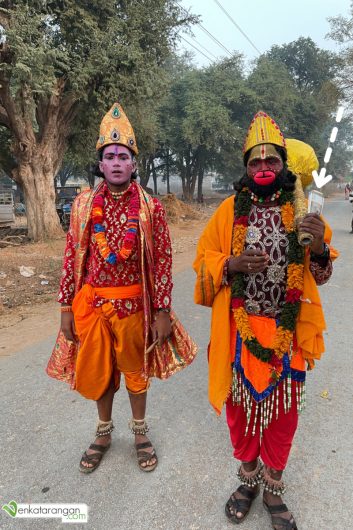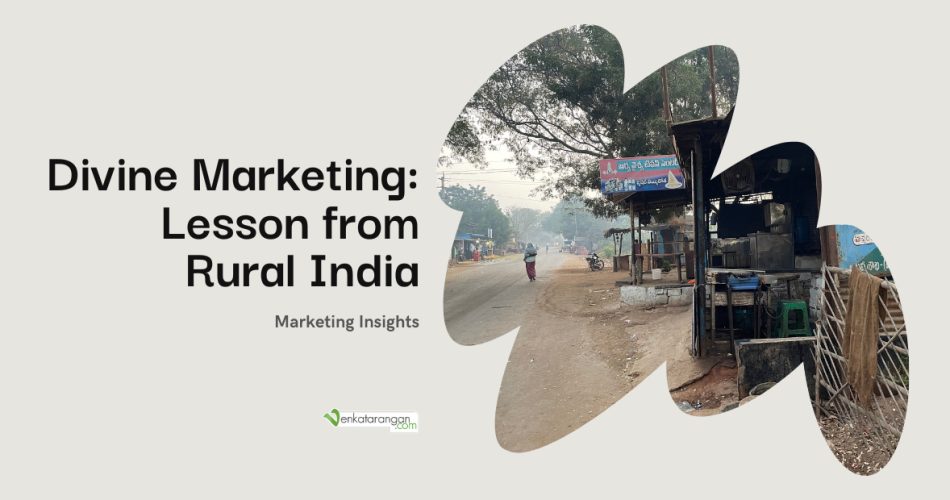
In the bustling streets of Narasapuram, a small town not far from the sacred Ahobilam in Andhra Pradesh, I stumbled upon a scene that’s quintessential in many temple towns across rural India. Amidst the daily ebb and flow of life, two figures dressed as the revered deities Lord Ram and Lord Hanuman stood out with their bright attire and painted faces—a vibrant tableau of devotion and tradition.
Yet, it was their savvy marketing strategy that truly piqued my interest. These modern-day embodiments of the divine duo had a clever trick, quite literally, in hand. As they meandered through the quiet road from one set of dwellings to another, they didn’t just offer blessings and smiles—they subtly showcased a stack of crisp ₹500 notes. This visual cue sent a clear message: divine blessings are abundant for the generous at heart. Far from mere ostentation, their display cleverly set the ‘donation bar,’ coaxing onlookers to bypass small change and aim higher with their offerings.
This was nothing short of a masterclass in marketing, tapping into the potent interplay of perception and influence. Flaunting higher denomination notes created an aura of success, lending gravitas to their spiritual enterprise. Passersby, impressed and motivated by the sight, were more inclined to donate generously in hopes of receiving greater blessings.
The approach of these actors serves as a poignant reminder of the power of perception in marketing. In a world swayed by appearances, their use of visual cues adeptly heightened their stature and the perceived value of their blessings. This episode offers a valuable lesson for marketers everywhere: presentation can profoundly affect reception. Watching this marketing acumen unfold, I marveled at the ingenuity of their method—a harmonious fusion of piety and commerce. These individuals didn’t solely depend on the intrinsic veneration for the deities they depicted; they actively engaged the community, artfully leveraging both respect and psychology.
Ultimately, this encounter was more than a mere reflection of India’s rich cultural fabric; it was a tangible lesson in marketing strategy, illustrating the effectiveness of integrating time-honored beliefs with contemporary techniques. The streets of Narasapuram, it seems, provide a living classroom on the art of influence and the timeless human penchant for the divine.



Comments